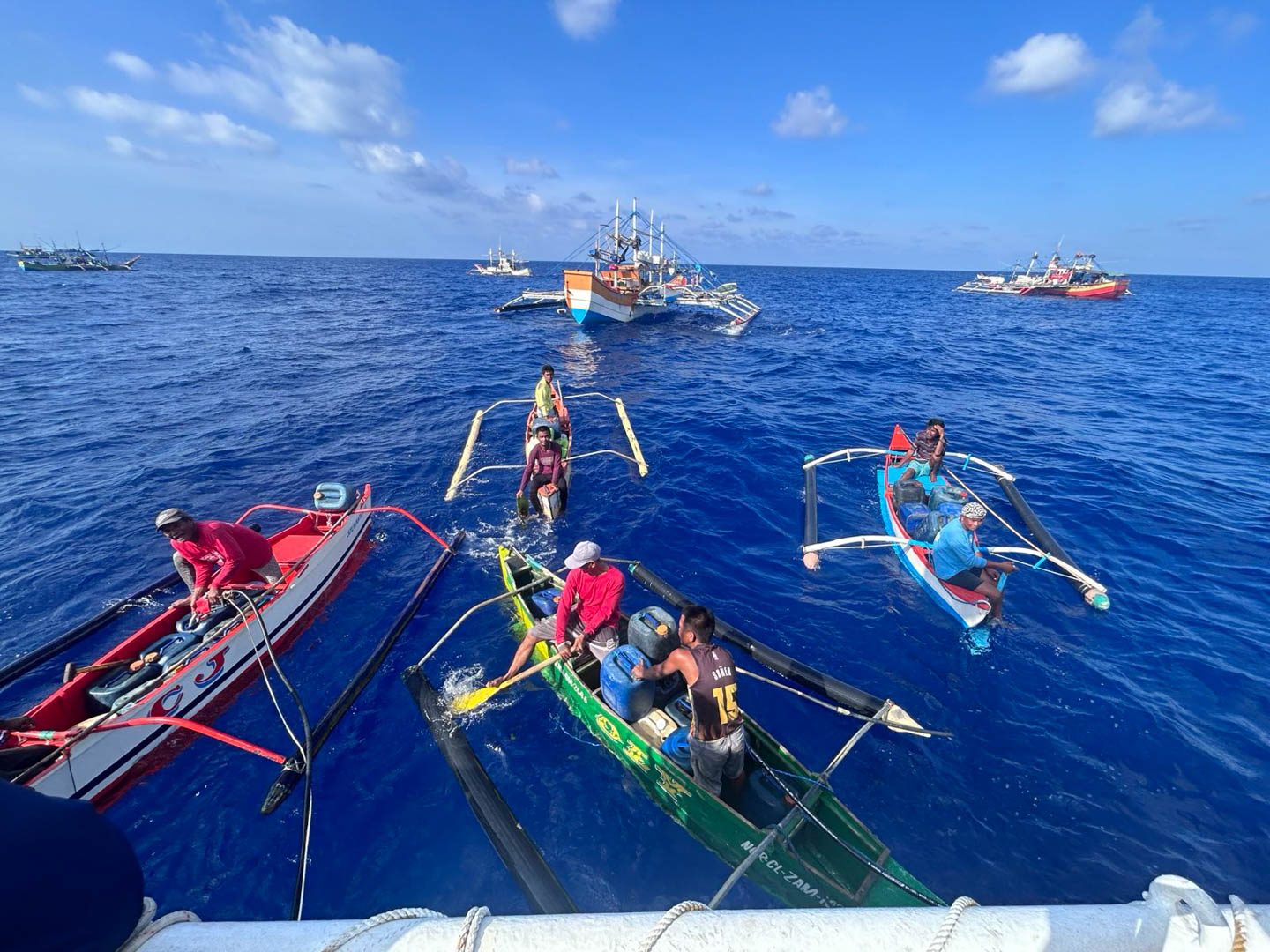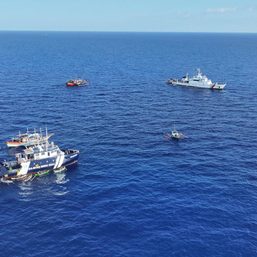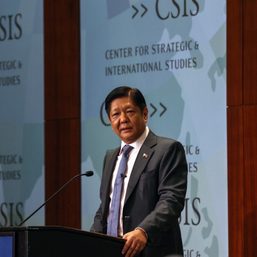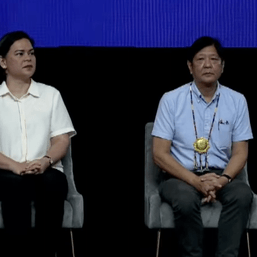SUMMARY
This is AI generated summarization, which may have errors. For context, always refer to the full article.

MANILA, Philippines – Under former president Rodrigo Duterte, the Philippines had apparently agreed to stay away from Panatag or Scarborough Shoal, a feature in the West Philippine Sea that’s just over 120 nautical miles away from mainland Zambales.
The details of the apparent “temporary” deal were made public by the Chinese Embassy statement late Thursday, May 2, days after the China Coast Guard (CCG) used water cannons against Philippine vessels on a humanitarian mission to Panatag Shoal, also known as Bajo de Masinloc, on April 30.
According to the embassy, the Duterte administration agreed to “temporary special arrangements by the Chinese side” that meant:
- Filipino fishermen can fish with small fishing boats in designated waters except the lagoon of Huangyan Dao (Panatag Shoal)
- The Armed Forces of the Philippines (AFP), Philippine Coast Guard (PCG), and other Philippine government vessels and aircrafts should refrain from entering the 12 nautical miles and corresponding air space of Huangyan Dao
The first point – to only allow Filipino fisherfolk in the vicinity and not in the lagoon itself – was made public even when Duterte was in power. The second point – that government vessels and aircraft would not enter the feature’s territorial waters and airspace – was not made as explicit.
China would regularly accost Filipino fisherfolk during expeditions to Panatag Shoal and prevent them from fishing there. But the harassment went on even after the 2016 deal under Duterte.
The 2016 Arbitral Award, which China refuses to accept, considers the shoal “traditional fishing ground” of different nationalities, including Filipino, Chinese, and Vietnamese. The tribunal, in its decision, called Beijing out for having “unlawfully prevented fishermen from the Philippines from engaging in traditional fishing at Scarborough Shoal.”
Sovereignty over Panatag Shoal is still contested, although it is fully within the Philippines’ exclusive economic zone. China has occupied the shoal since 2012, following a standoff between Manila and Beijing. At least two CCG vessels occupy the shoal’s lagoon at all times while at least two other CCG ships patrol its immediate vicinity.
China claims most of the South China Sea as its own, including the West Philippine Sea, which includes the Philippines’ exclusive economic zone. The 2016 Arbitral Award deemed this claim invalid, but China refuses to acknowledge it.
Responding to a question from Manila, PCG spokesperson for the West Philippine Sea Commodore Jay Tarriela said the “red line” of 12 nautical miles – which he himself pointed out – “does not actually exist.”
“We have successfully proven that it is merely a product of their imagination. It is unnecessary for us to adhere to that line. Under this administration, all illegal lines that contradict the 2016 arbitral award and UNCLOS [United Nations Convention on the Law of the Sea] will be invalidated. We will demonstrate to the world that these lines drawn by bully countries like China are baseless and serve only to intimidate the Philippines using their bigger coast guard vessels and maritime militia,” he added.
April 30 mission
On April 30, the CCG used strong water cannons against the BRP Datu Bankaw and BRP Bagacay, two Philippine ships that were en route to Panatag Shoal to bring supplies for fisherfolk in the area.
Journalists on board the two vessels, as well as video releases from the PCG, showed how the CCG vessels targeted the Philippine vessels’ antenna, potentially impeding their navigation and communications while out at sea.
Tarriela also noted that the water pressure from China’s water cannons was so strong that the ships’ railings were damaged. Had it directly hit a person, the blow could have been fatal, he added. Tarriela said the CCG’s actions “elevated” tensions in the West Philippine Sea.
Under President Ferdinand Marcos Jr., the Philippines has become more assertive in upholding both its sovereign rights and claims in the West Philippine Sea. Part of this push has been the transparency initiative, in which the Philippines actively exposes – through both government releases and media embeds – Chinese actions in those waters.
Bilateral ties between the Philippines and China have turned tense in the past year, as encounters in the West Philippine Sea continue to rise. In Ayungin or Second Thomas Shoal, the CCG and Chinese Maritime Militia routinely block, harass, and have even used water cannons against Philippine vessels.
China has blamed rising tensions on the Philippines for supposedly reneging on Dutere-era agreements in the West Philippine Sea – even as, in the Chinese embassy’s own words, these agreements were “temporary” or “informal,” meaning no treaty or document was signed between the two nations. – Rappler.com
Add a comment
How does this make you feel?


![[Judgment Call] Philippine seas and a healthy dose of transparency](https://www.rappler.com/tachyon/2024/05/judgement-call-ayungin-shoal-may-16-2024.jpg?resize=257%2C257&crop=316px%2C0px%2C720px%2C720px)
![[Rappler Investigates] Deal or no deal, Duterte?](https://www.rappler.com/tachyon/2024/05/deal-or-no-deal-duterte-may-16-2024.jpg?resize=257%2C257&crop=422px%2C0px%2C1080px%2C1080px)


![[PANOORIN] Paninindigan ng mga sibilyan sa Pag-asa Island](https://www.rappler.com/tachyon/2024/05/TITLECARD-1.png?resize=257%2C257&crop=421px%2C0px%2C1080px%2C1080px)


![[ANALYSIS] How have scholars confronted the war on drugs in the Philippines?](https://www.rappler.com/tachyon/2024/05/tl-scholars-war-on-drugs.jpg?resize=257%2C257&crop_strategy=attention)



There are no comments yet. Add your comment to start the conversation.